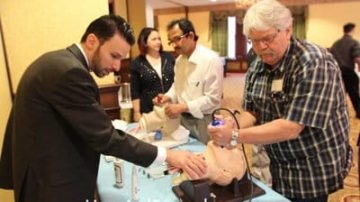More Articles – Arterial line, Central line, Chest Tube, Emergency Procedures, Endotracheal Intubation, FAST Exam, Glidescope Intubation, Hospital Procedures, King Tube, Lumbar Puncture, Medical General, medical procedures, Needle Decompression, Paracentesis, RUSH Exam, Thoracentesis, Ultrasound-Guided Peripheral IV
Hospitalists are in the ideal position to perform bedside procedures on their patients. They know every aspect about their patients and have had the opportunity to develop a good rapport and the trust of their patients. So, why are they…
Read More




